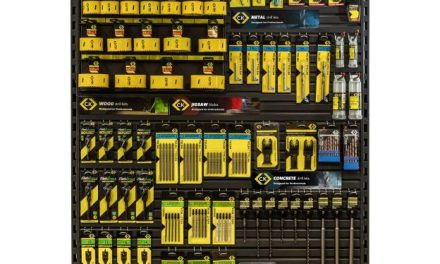 Ten top tips for industrial plug and socket specification
Ten top tips for industrial plug and socket specification
Specifying electrical products and systems is a stressful job – get any aspect of it wrong and the consequences can be costly, time consuming and even life threatening. Industrial installations in particular can prove extremely challenging due to the fact they require more robust solutions than a commercial or residential project.
Caroline Boden of Legrand talks to Electrical Engineering about the processes involved in ensuring the correct and best specification of industrial plugs and sockets.
“Industrial installations present a unique set of challenges,” said Caroline. “Not only should specifiers be seeking out the best solution in terms of electrical performance, installation ease and lifetime cost, they also need to take into consideration product durability, robustness, connection reliability and safety – all of which are imperative in the kind of tough environments associated with industrial applications.
 “What this means in practice is that there are very different specification rules for industrial installations and ensuring every single specialist need is met can be challenging for even the most experienced specifier. With the intention of providing a helping hand we’ve compiled ten top tips for specifying industrial plugs and sockets.”
“What this means in practice is that there are very different specification rules for industrial installations and ensuring every single specialist need is met can be challenging for even the most experienced specifier. With the intention of providing a helping hand we’ve compiled ten top tips for specifying industrial plugs and sockets.”
1) Be protected
All industrial plugs and sockets have a protection classification in terms of IP (protection against solid bodies and liquids) and IK (protection against mechanical impact). Therefore, always choose the product with the correct IP and IK rating for the application and environment in which the products will be used.
2) Material cost
The decision of whether to use a metal or plastic product can have a major impact in terms of cost. As a rule of thumb metal products are more expensive, but are more durable and have a higher IK rating for high impact resistance and robustness. The application and environment must be considered, and remember, an over specified metal product will impact significantly on price, while an under specified plastic one may well be damaged too easily and so reduce the lifespan of the installation.
3) The right angle?
Always bear in mind that there are angled plugs as well as traditional straight ones. Consider opting for angled plugs in installations where there are either cabling space restraints or applications requiring 63A and 125A products, as the handle on the angled plug facilitates easy removal from the socket.
4) A question of mounting
Sockets are available in both surface and panel mounting options. The panel mounting variant allows an industrial socket to be installed into an enclosure or panel, while surface mounting enables installation onto any solid surface using a rigid conduit.
5) Simple security
You wouldn’t leave your house unlocked and unsupervised so why risk it with an industrial socket? Products with padlockable covers are now readily available, help prevent unauthorised usage and provide increased safety during maintenance.
6) Temperature
All industrial plugs and sockets have operating temperature limits, and the wider the temperature, the broader the appeal in terms of installation environment. Specifying a product with an incorrect operating temperature may result in the product degrading and in turn may cut short its operating life. Therefore, ensuring temperature rating is aligned to your installation environment is vital.
7) Fixing
The specifier should always note the material of the screws and contact sleeves for the products, as different materials have different benefits. For example, brass contact sleeves help ensure high quality, reliable connections, while stainless steel screws provide maximum durability and high corrosive resistance.
8) Combinations
Combined industrial switch sockets are ideal for installations where space is at a premium. These products also save both time and costs by providing the features of two products within one unit.
9) Safety
When industrial plugs and sockets are being used in a facility where employees are in contact with machinery and power supplies, safety is paramount. Our Hypra Prisinter sockets have a unique interlocked load break system, meaning the plug has no power until it is quarter turned and interlocked into place. Subsequently the isolation switch must be pressed, thus disconnecting the power, before the plug can be removed from the socket.
10) Auxiliaries
In applications where remote indication or the introduction of a secondary device is required, products like Prisinter provide the perfect solution. Push-in auxiliary contacts can easily be fitted, which work in conjunction with the main contacts to provide remote indication of the device’s status. They can also be utilised to provide start-up for a support product, e.g. in high temperature environments where a cooling fan must be activated at the same time as the circuit being fed, or in dusty zones where ventilation is required simultaneously to support the primary circuit.
“Some of these tips may not seem like rocket science, but they don’t need to be, they just need to be considered,” continued Caroline. “Getting a specification absolutely right not only helps in terms of cost, installation speed and end user safety, but goes a long way in helping to provide system and product integrity along with an extended product life cycle.”
Legrand’s Hypra industrial plugs and sockets have been designed for use in environments where heat, humidity, dust, impact and chemical products are present, including nuclear, chemical and process industries. To find out more and order a copy of the company’s new industrial and power protection catalogue visit www.legrand.co.uk or call 0845 605 4333.


